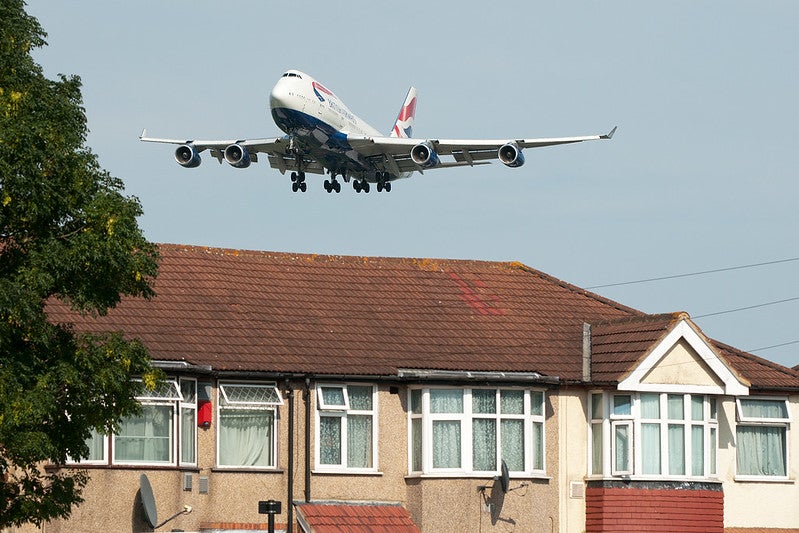Strategies to decarbonize aviation must protect communities and climate
- EDF’s new peer-reviewed perspective highlights how efforts to cut greenhouse gases from planes must also reduce harmful pollutants that disproportionately affect nearby and disadvantaged communities.
- Lowering the aromatic and sulfur content of jet fuel can cut particle pollution, improve public health, and reduce contrail formation — making skies cleaner and aviation more sustainable.
Air transport is a fast-growing sector that urgently requires both climate and air pollution solutions. Efforts to decarbonize air travel must also reduce pollution harmful to human health.
Strategies to decarbonize aviation must protect communities and climate Share on XA new EDF peer-reviewed perspective, Decarbonization of the Aviation Sector Must Address Air Quality Concerns, is a call for action on tackling the twin challenges of climate and air pollution from planes as the sector moves towards defining net-zero pathways. It summarizes extensive research characterizing several aviation air pollutants and their associated health impacts. We also discuss climate challenges while highlighting potential short and long-term solutions.
Planes emit pollutants at various phases of the taxiing, landing and take-off cycles at low altitude, and during the climb, cruise and descent phases. These include particulate matter, sulfur oxides, nitrogen oxides, carbon monoxide, and volatile organic compounds. Furthermore, studies have shown that PM of certain sizes, ultrafine particles, can travel far distances and pose health risks to not only immediate neighbors but also communities many miles away.
The toxicity of aviation pollution
UFPs are associated with a range of health problems because they can penetrate deep into the lungs. Once they enter the bloodstream, their damaging effects can extend beyond respiratory conditions to include cardiovascular diseases, cancer and adverse effects in utero such as low birth weight.
One study involving schools surrounding seven California airports reported that around 65,000 students are exposed to elevated UFPs from airport activity and a disproportionate number of these students come from disadvantaged socioeconomic backgrounds. An EDF study, Particulate matter pollution from aviation: Effective measures for changing the course of longstanding environmental injustices, further illuminates the disparities within airport-adjacent communities nationwide. This analysis found that the residents of neighborhoods near major U.S. airports who bear the brunt of aviation-related pollution and its associated health complications are disproportionately lower income and people of color.
Contrails contribute to climate change
Persistent contrails are a significant contributor to aviation’s climate impact. These line-shaped clouds are formed when water condenses and freezes on aircraft exhaust particles at high altitudes. Although water vapor will always be in the picture, the good news is that the more persistent of these contrails can be prevented by cleaning up the fleet-wide jet fuel supply before combustion
Lowering the aromatic and sulfur content of jet fuel is one near-term solution we identify in the perspective because it will reduce particle pollution in aircraft exhaust. This is a win-win solution leading to improved air quality, fewer health damages and fewer contrails. There also are potential solutions in operations and engine design to further reduce air pollution.
As advocates look for ways to hold industry and policymakers accountable, our compilation of research demonstrating scientifically backed solutions can be a powerful tool when advocating for cleaner skies.











